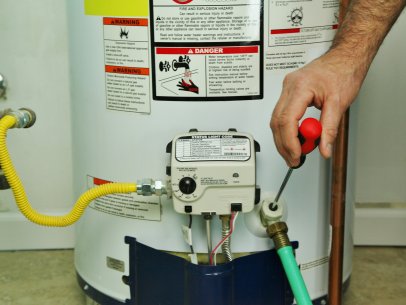Key Maintenance Strategies for Your Home's Hot Water SystemMaking Sure Durability of Your Home's Hot Water System: Maintenance Tips
Key Maintenance Strategies for Your Home's Hot Water SystemMaking Sure Durability of Your Home's Hot Water System: Maintenance Tips
Blog Article
On this page on the next paragraphs yow will discover more first-rate news all about Water Heater Maintenance Tips You Can't Afford to Forget.

Hot water is crucial for everyday convenience, whether it's for a refreshing shower or washing meals. To guarantee your warm water system runs efficiently and lasts much longer, normal maintenance is crucial. This article supplies useful ideas and understandings on just how to maintain your home's hot water system to stay clear of disruptions and expensive fixings.
Intro
Keeping your home's hot water system might seem complicated, yet with a few basic actions, you can guarantee it runs smoothly for years to come. This guide covers every little thing from recognizing your warm water system to do it yourself upkeep pointers and recognizing when to employ specialist aid.
Importance of Preserving Your Warm Water System
Regular maintenance not just expands the life expectancy of your hot water system however likewise guarantees it runs successfully. Neglecting maintenance can result in lowered efficiency, higher energy expenses, and even early failure of the system.
Signs Your Hot Water System Needs Maintenance
Knowing when your hot water system needs attention can avoid major concerns. Keep an eye out for indications such as inconsistent water temperature level, odd sounds from the heater, or rustic water.
Understanding Your Hot Water System
Before diving right into upkeep jobs, it's useful to comprehend the fundamental elements of your warm water system. Commonly, this includes the water heater itself, pipelines, anode poles, and temperature level controls.
Month-to-month Upkeep Tasks
Regular monthly checks can assist capture small concerns prior to they rise.
Flushing the Water Heater
Flushing your water heater removes sediment accumulation, enhancing performance and lengthening its life.
Monitoring and Changing Anode Rods
Anode poles protect against deterioration inside the storage tank. Checking and changing them when worn is vital.
Evaluating and Readjusting Temperature Level Setups
Changing the temperature setups guarantees ideal performance and security.
DIY Tips for Upkeep
You can carry out a number of maintenance tasks yourself to keep your hot water system in top condition.
Checking for Leakages
On a regular basis inspect pipelines and links for leakages, as these can result in water damages and higher costs.
Evaluating Stress Relief Valves
Testing the pressure relief valve guarantees it works properly and avoids excessive stress build-up.
Insulating Pipelines
Shielding hot water pipelines reduces warm loss and can conserve power.
When to Call an Expert
While DIY maintenance is helpful, some problems require professional know-how.
Facility Concerns Requiring Professional Help
Examples include major leaks, electrical problems, or if your water heater is consistently underperforming.
Routine Professional Maintenance Advantages
Expert maintenance can consist of detailed inspections, tune-ups, and making certain conformity with safety and security criteria.
Verdict
Normal upkeep of your home's warm water system is crucial for effectiveness, long life, and price financial savings. By adhering to these pointers and understanding when to seek specialist assistance, you can guarantee a trusted supply of hot water without unexpected disturbances.
Water Heater Maintenance Tips
Test the TPR Valve
Shut off the power and the cold-water supply valve. Place a bucket under the pipe connected to the temperature-pressure-release (TPR) valve on the top or side of the tank. (This valve opens if the tank pressure gets too high.) Lift the valve’s tab to let some water out, then let go. If water keeps flowing, drain the tank partway, unscrew the old valve with a pipe wrench, and install a new one. Check the Anode Rod
Put a hose to the tank’s drain cock and let out a few gallons of water. Now fit a 1 1/16-inch socket onto the rod’s hex head on top of the heater (or under its top plate) and unscrew the rod. If it’s less than ½ inch thick or coated with calcium, buy a new one, wrap its threads with Teflon tape, put it back in the tank, and tighten securely. Use this segmented rod if headroom above the tank is limited. Drain the Tank and Wash Out Sediment
Drain the remaining water in the tank into the bucket, then stir up the sediment on the tank’s bottom by briefly opening the cold-water supply valve. Drain and repeat until clean water comes out of the hose. Close the drain cock, refill the tank, and turn its power back on. Adjust the Temperature
Find the temperature dial on the side of the tank and unscrew its cover. Adjust the dial to 120 degrees using a flathead screwdriver. For every 10 degrees the temperature is lowered, you can expect to save up to 5 percent in energy costs. Turn the water heater off or the thermostat down to its lowest setting if you plan to be away from home for more than three days. Insulate the Pipes
Buy some self-sticking 3/8-inch-thick foam pipe insulation that matches the pipes’ diameter. Slide the foam over the hot-and cold-water pipes as far as you can reach. Insulating the cold-water pipe prevents condensation in summer. Peel the tape and squeeze the insulation closed. If the pipe is 6 inches or less from the flue, cover it with 1-inch-thick unfaced fiberglass pipe wrap. https://www.thisoldhouse.com/plumbing/21016402/how-to-maintain-a-water-heater

As an avid person who reads about How to Maintain a Hot Water Heater in a Few Simple Steps, I think sharing that excerpt was a good idea. Sharing is nice. You just don't know, you will be doing someone a favor. Bless you for being here. Kindly come visit our site back soon.
Visit My Web Page Report this page